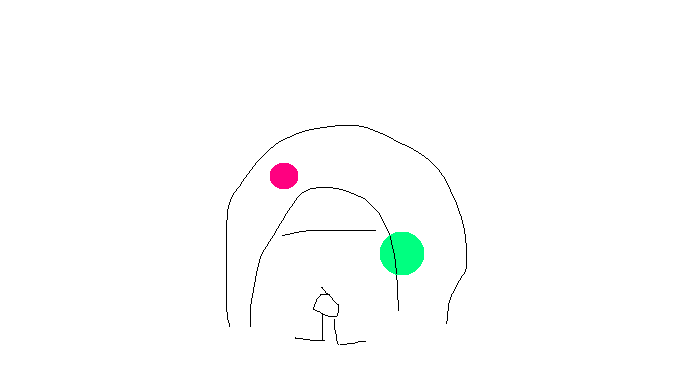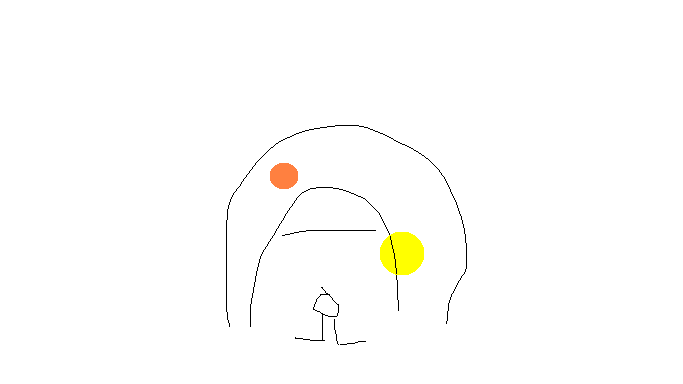Enemies coordinating on abstract conditions
Complex systems are often made up of competing parts that have seemingly conflicting goals. For example, an economy is made of buyers who want to get everything for free and sellers who want to get paid lots of money to do nothing. Nevertheless, they somehow coordinate. This may be because while they disagree on their preferred specific conditions, they each agree on the abstract conditions they are trying to achieve.
To see what I mean, consider a basketball game. Modern basketball is characterized by a massive increase in three-point shot attempts from previous eras of basketball. There’s even been a worrying narrative that three-point shooting will eventually consume the entire the game because 3 > 2. But this isn’t what the offense actually wants. The offense really wants to take the shot that yields the highest expected point total, regardless of where that shot is on the court. If the defense guards the three-point shot heavily, reducing the expected points a three-point shot offers, then the offense will shoot somewhere else. A 90% chance of hitting a two-point shot is worth 1.8 points, whereas a 50% chance of hitting a three-point shot is worth only 1.5 points, so the offense greatly prefers the first kind of shot to the second.
You could think of the offense as having a material goal and an abstract goal. The material goal is to hit any and every shot, no matter where you are on the court. That is to say, the offense wants every single shot to go in. While this would be really good for the offense, it’s not useful for guiding basketball strategy. Saying to your players “Just don’t miss ever” isn’t the path to success. A better guide is the abstract goal, which is to always take the shot that has the highest expected point value. This could be a shot that is more likely to miss: a 40% three-point shot is worth 1.2 points, whereas a 50% two-point shot is worth only 1 point. This leads to more useful advice like “take the open shot”. Still, it’s not terribly helpful for planning an offense because the best shot is always going to be changing as the defense adjusts.
Ultimately, what the offense really wants to achieve, in an abstract sense, is to equilibrate the marginal expected point value of every shot location. To see this, suppose we’re comparing two shooting spots on the court, one of which is yielding a lot of expected points, and the other not yielding that much.

Because the green spot is more valuable than the red spot, the offense should try to take more shots at the green spot and fewer shots at the red spot. But if they were playing rationally, they were already taking the best shots they could at the green spot. As a result, the expected points per value of the marginal shot—the next shot the offense takes—should go down at that spot, because it’s not as good of a shot as the previous shots that made the expected points per value there so high. Similarly, when the offense reallocates shots from the red spot to the green spot, they should take away the worst shots they were shooting at the red spot, the shots that yielded the lowest expected points. Thus, the expected points per shot at the red spot will go up.

The offense should only stop reallocating shots from the worst spot to the better spot when the expected marginal value of a shot at one spot is equal to the expected marginal value of a shot at the other spot.
The benefit to the offense of taking the marginal shot is the expected point value. Since this expected point value is accrued on the margin, we could call it the Marginal Expected Points Value, or just Marginal Points (MP) for short. The cost to the offense of taking the marginal shot is the marginal shot they didn’t take: the marginal shot they could have taken elsewhere. If a shot earns you 1.5 expected points, but you could have taken a shot that earns you 1.6 expected points, then it wasn’t a good shot. The marginal cost of taking a shot could be called Marginal Cost (MC). Then as per the above analysis, the abstract condition an efficient offense must meet is Marginal Points = Marginal Cost, or MP = MC.
Note that the expected points value of a marginal shot can range from 0 (you’re going to miss no matter what) to 3 (you’re going to hit the 3, ignoring free throws). But no matter where MP falls in this massive range, the efficient condition remains MP = MC.
This is crucial because while the offense and the defense completely disagree on the material conditions, they agree on the abstract conditions. The offense wants to score 3 points per shot, while the defense wants the offense to score 0 points per shot. It seems like they couldn’t disagree more. But the defense also wants to achieve the abstract condition MP = MC! Just as the offense wants to reallocate shots from a low-yield spot to a high-yield spot until the marginal shot values equilibrate, the defense wants to reallocate defensive coverage from the low-yield spot to the high-yield until the marginal shot values equilibrate. The offense and the defense want opposite outcomes, but because they agree on abstract conditions, they’ll exhibit the same pattern of moving away from low-yield spots to high-yield spots.
The result is a highly coordinated game in which both the offense and the defense predict where the offense gets the highest-valued marginal shot from and moves their players to that spot. This looks like the offense driving to the desired location and the defense racing to beat them to it. If the offense and the defense weren’t both trying to achieve MP = MC, then the game of basketball would be an uncoordinated mess. But because offense and defense alike agree that MP should equal MC, the offense and the defense flow together as if in a highly choreographed dance, such that the audience can predict where the one will be by where the other will be.
This is true even though they completely disagree on material conditions: the offense wants to score 3 points per shot, while the defense wants them to score 0 points per shot!
By exploiting (perhaps unintentionally) the coordination resulting from agreement on abstract conditions, the NBA is able to take the natural inclinations of enemies (opposing teams) and turn the result into the goal state of a fun game via the communication and competition between the offense and the defense. It doesn’t have to tell the two teams to coordinate. They just figure it out by each following their own self-interest.
Similarly, both buyers and sellers, although seemingly on opposite sides of an exchange, want to achieve the same abstract condition wherein quantity supplied equals quantity demanded (QS = QD). That is, if sellers are pricing too high to sell everything, they actually want to lower the price, which is what the buyers want. And if the buyers are bidding too low to buy everything, they actually want to raise the price, which is what the sellers want. Even though they disagree on the material conditions—sellers want to sell everything for a billion dollars; buyers want to buy everything for a penny—they agree on the abstract conditions and so coordinate.




